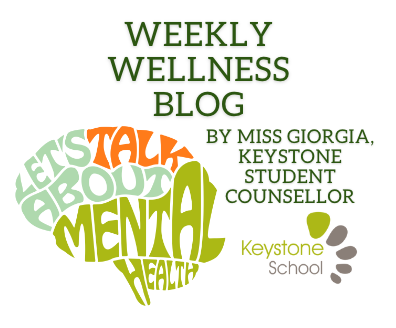Welcome to Keystone School’s new weekly wellness blog!
My name is Giorgia Campanella, I am a third-year student at George Brown College in the Child and Youth Care Program, and I have had the pleasure of being placed at Keystone School as a Student Counsellor. While knowledge sharing is a big part of my role in school, I wanted to give opportunities for parents and students to have access to new information outside of school as well. Week-to-week the topics I will cover may change but they will all centre around wellness. For the very first blog post it will be focused on common mental health myths and misconceptions, giving us the minimal foundation of knowledge we need before moving along on this journey.
First, let’s give a definition on mental health vs. mental illness:
Without further ado, let’s challenge some misconceptions!
Myth #1: “Mental illnesses are NOT real illnesses.”
Let’s take a deeper look at this misconception… Just like a physical illness, disability or disease, mental illness can affect the ability to function. Mental illness affects many people and affects those many people in different ways. Let’s compare this to someone breaking a bone; when someone breaks a bone or has any type of physical injury, we don’t ask them to “get over it,” and we certainly do not judge them for seeking treatment for it either. While two people can have the same “physical injury,” one may be able to continue their day-to-day functioning and the other may not be able to. It is so important not to compare anyone’s pain or suffering and/or their ability to cope with it!
Myth #2: “Mental health struggles do not affect kids or teens.”
“What do children have to be stressed about?! They’re kids!” It’s not uncommon to hear this way of thinking, but it is important to know that even very young kids may show early signs of mental health concerns. Mental illness or mental health concerns in children and teens is more common than you think; in fact, half of all mental health disorders start to show symptoms before the age of 14 and three-quarters of mental health disorders begin before age 24. Although many children and teens experience changes in mood at that stage of development, it is important not to assume that it is “just a phase”, or a teen being “moody.” A number of factors can contribute to mental illness and children and the earlier it is treated, the earlier a chance they have to manage unwanted symptoms.
Myth #3: “People with mental illness are violent or dangerous!”
Violent crime is complex and is usually not caused by one thing. Only a very small percent of people who committed a violent crime have a mental illness; people with a mental illness are no more dangerous than people without one. Actually, people with mental illness are in fact more likely to be a victim of violence rather than being the one to cause harm. A lot of the fear surrounding those who have challenges with their mental health is born out of just not knowing about it, hence why we are myth busting on this first blog!
Myth #4: “Mental illnesses are permanent and untreatable.”
Some mental health disorders are chronic, meaning they last a long time and/or is reoccuring, but this in no way means that they are untreatable. Today, in Canada, a wide range of services, treatments and supports are available for those struggling and it has been proven that treatment significantly helps manage difficult symptoms. Some use therapy, some use medication, some use both – there is no “right” or “wrong” way to seek help. People with mental illness can and do continue to live productive, fulfilling and engaging lives where they contribute their skills, talents and abilities to their communities. Everyone has highs and lows, with mental illness those lows tend to feel more severe and may last longer, but with treatment and support it does not need to last forever.
Myth #5: “You can always tell when someone is struggling.”
Mental health struggles and mental illness are more often invisible than not, especially if someone has the support to better manage their symptoms. Often though, these symptoms are suppressed out of a fear of being judged or due to stigma surrounding mental illness. This stigma can be at the hands of people around them, or even what they think of themselves. It is always best to check in with your friends and family; yes, even the ones that seem “fine.”
Myth #6: “There is nothing that I can do to help someone with a mental illness…”
You wouldn’t even believe the difference that love, understanding and support can do for someone struggling with their mental health!!! Family and friends can be great influences for those who have not received treatment and are still very important to those who have already gotten treatment. Being available as a support, helping someone seek out treatment services and simply treating someone struggling with respect are all things you can do to lend a helping hand. Just like we would want someone to be there for us when we are unwell, be that person for others.
“No one would ever say that someone with a broken arm or a broken leg is less than a whole person, but people say that or imply that all the time about people with mental illness.”
Unfortunately, the list of myths and misconceptions on this topic goes on and on. I can bet that we have all, at one point in our lives, believed a misconception about mental health or mental illness. I hope that this first blog has perhaps challenged a myth you heard and believed, I hope it is putting us on the right track to be more compassionate to ourselves and others and I hope you come back next week to continue along this journey of knowledge sharing and understanding together.
Warm wishes,
Ms. Giorgia







